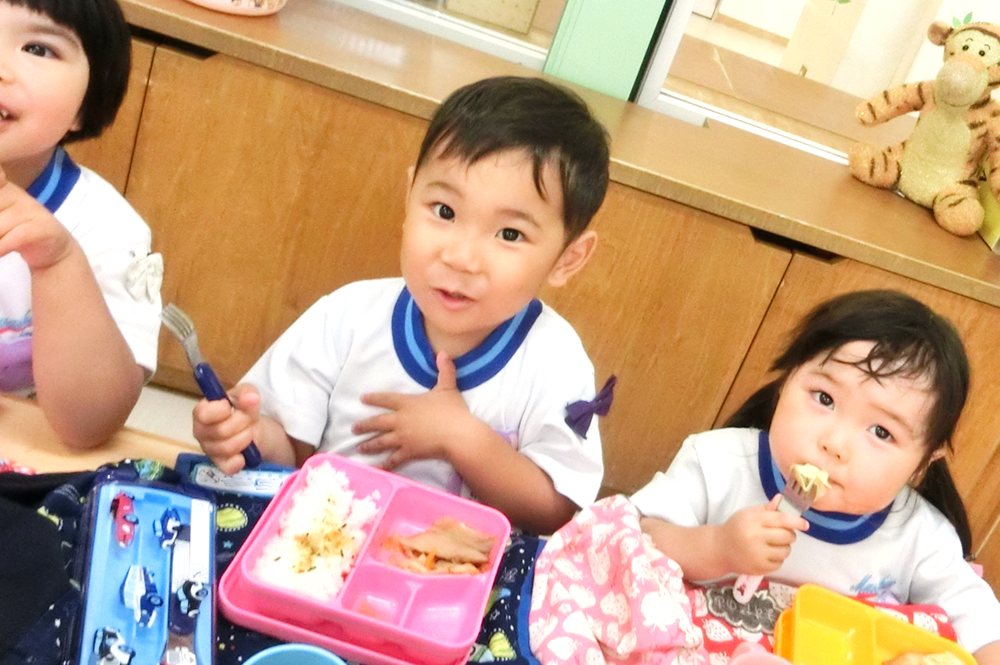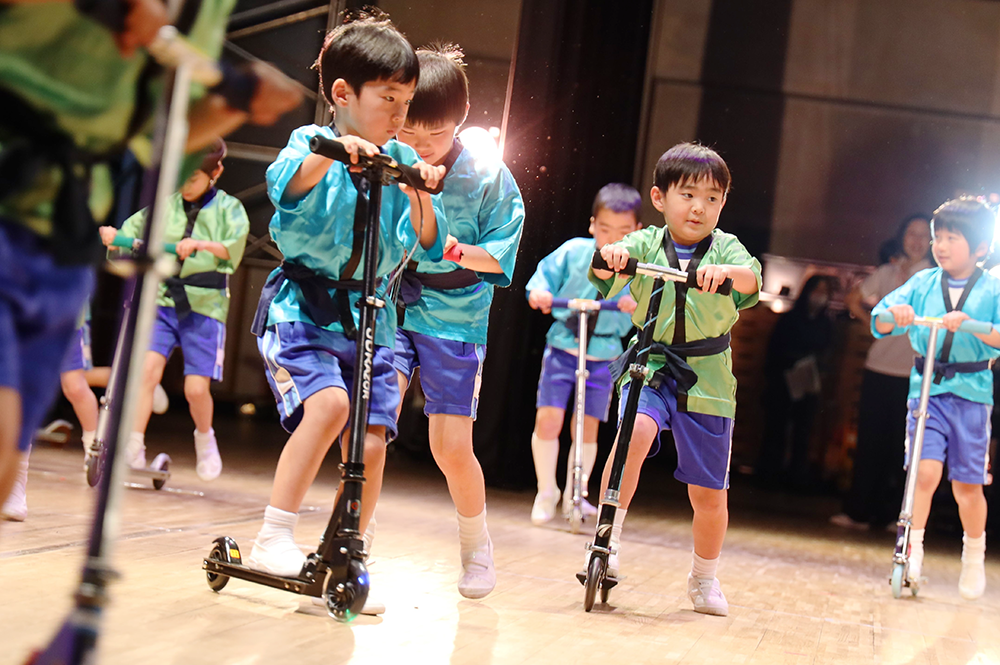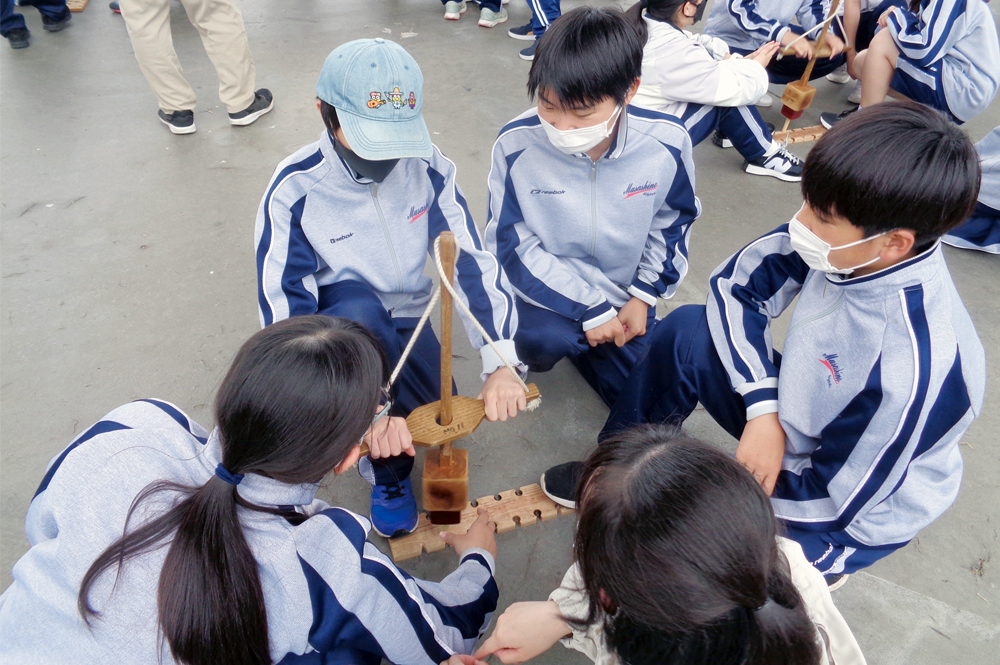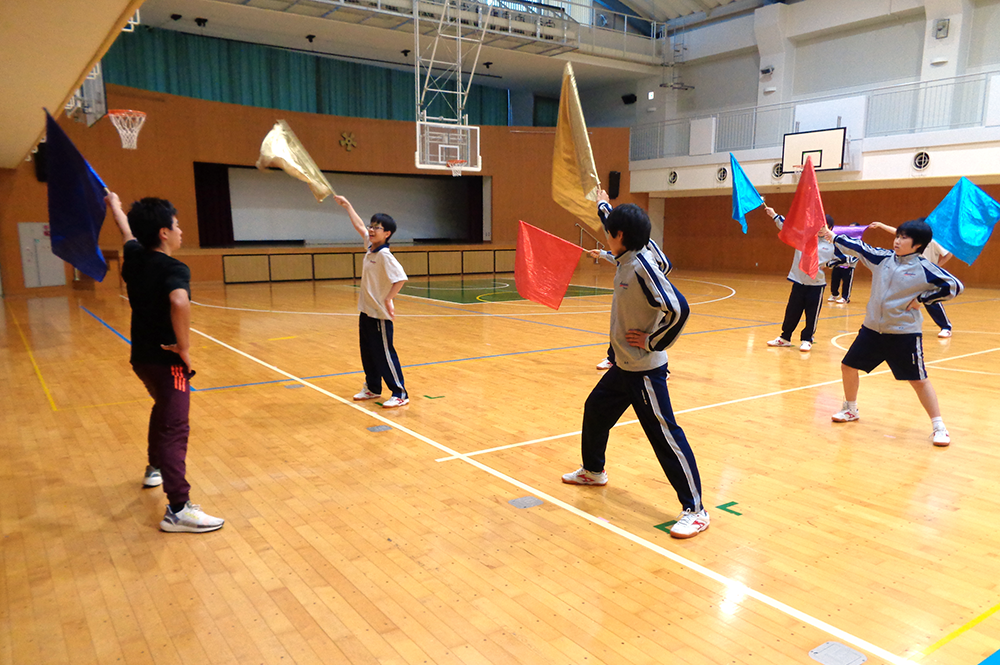| Facilities (founding year) |
MHS kindergarten(1964) MHS elementary school (1977) MHS junior high school (1983) MHS vocational high school (1986) MHS Center for Education and Research (2004) Boston Higashi School MA(USA) (1987) |
|---|---|
| Liaison office | Musashino Higashi Gakuen |
| Address | 2-1-10, Midoricho Musashino-shi, Tokyo, 180-0012, Japan |
| gakuen@musashino-higashi.org |
MHS is a unique school that educates children/students with ASD (Autism Spectrum Disorder) and TDC/TDS (typically developing children/students) on the same campus. The history of MHS begins with the opening of its kindergarten in 1964. The kindergarten was originally opened only for TDC, however, five children with ASD applied at the time of the opening and all of them were admitted, which led to "inclusive education" in which children with ASD and TDC study together. After that, an elementary school, junior high school, and vocational high school were opened one after another, and each school has adopted this "inclusive education" system.
Once upon a time, Harvard University professor Dr. Jerome Kegan visited the elementary school. He was deeply interested in the ASD education at MHS, and after returning to the United States, he introduced the concept of our education to people involved in education for children with disabilities in the US.
This triggered an enthusiastic request from parents of children with ASD in the United States who had learned of the existence of MHS to open a similar school in the United States. At the request, we opened a sister school, Boston Higashi School, in Boston, MA. The Boston school, which also has a boarding system, constantly educating about 150 students with ASD a year.
Later, the school's unique educational activities were evaluated and commended as “an excellent private special education school,” accredited by the National Commission for the Accreditation of Special Education Services.
Visit the Boston Higashi School
https://www.bostonhigashi.org/
Finally, MHS has completed its educational system by establishing the Musashino Higashi Center for Education and Research as an educational institution for children/students with ASD who are not enrolled in our school. Currently, MHS is educating about 2000 children and students of which about 1000 have ASD.
In Japan, the education for children with ASD conducted by our school is attracting not only researchers but also the Ministry of Education, Culture, Sports, Science and Technology, the Ministry of Health, Labor and Welfare, and the Tokyo Metropolitan Government, and we have been receiving support from them. And at the same time, MHS is also enjoying a good global reputation, and many people from all over the world are visiting to observe our educational activities.
The following are the characteristics of MHS education for children/students with autism.
Our educational method for children/students with ASD is quite different from any other general educational method for children/students with disabilities. We put four main pillars on educational methods as follows:

A common feature of children with ASD is that they are not interested in communicating/interacting with others including parents, especially in their early childhood. They show a strong obsession over certain things and pay little attention to what they are not interested in. As a result, when parents try to have them acquire basic lifestyle habits such as going to the bathroom, eating, changing clothes, and going to bed, they do not accept the guidance and carry out typical inappropriate behaviors that are not seen in TDC. They are often seen by the general public as children with serious disabilities.
In addition, TDC naturally develop lifestyles and grow by following parental guidance and imitating the behavior of their family members, However, children with ASD in early childhood rarely develop as well as such TDC.
Dr. Kiyo Kitahara, the founder of MHS, developed a unique educational method called “Daily Life Therapy®” more than 50 years ago as an educational method for children with ASD who have these characteristics, aiming for their social independence.
Daily Life Therapy® employs a holistic approach in educating the whole child using the three fundamental elements of 1) physical stamina building, 2) emotional stability and 3) intellectual stimulation. In "physical stamina building", children establish the rhythm of life by refreshing and physically strengthening through sports and exercise. Then, as their emotional state becomes stable, they gradually improve their concentration and patience. By understanding what is appropriate/inappropriate to do, which is the basis of “emotional stability”, they pay more attention to their surroundings, and their motivation and initiative are fostered. At this stage, they are ready to take guidance on "intellectual stimulation (development)"; their intellectual abilities are brought out under the guidance of teachers, which further enables them to learn school subjects.
In general, education for children with disabilities tends to focus only on the areas that the target children cannot do, and intensively trains them to correct(remediate) them. A similar pattern can be seen in education for children with ASD. On the other hand, Daily Life Therapy® focuses on finding out what the target child can do and helping them to develop by observing their behavior in an integrated manner. If the target child cannot do something, give guidance repeatedly over time. In other words, what we value is not "remediation" but "habituation" so that they can lead their daily lives without much trouble.
Children/students with ASD who are not interested in interacting with others, nor ready to accept guidance will gradually increase what they can do as a result of patient and consistent guidance by parents and teachers and naturally spending daily life with their parents. Along with that, they gradually grow intellectually, become more confident and begin to pay more attention to their surroundings. By establishing their habits over time, there are quite a few cases where they grow up able to adapt to society and engage in daily activities.
Daily Life Therapy® is not an intensive training for "what he/she can't do", which tends to put excessive stress on the target child, but it is to grasp the whole picture of the child and gradually increase "what he/she can do" over time to foster a sense of accomplishment. Based on this Daily Life Therapy®, our school continues to develop more effective methods for educating children with ASD through daily ingenuity.

In general, education for children/students with ASD is mainly one-on-one instruction, and it is usual where one instructor (adult) gives educational instruction to one child with ASD in an isolated environment. However, the biggest issue common to children with ASD is the removal of communication obstacles, and it is almost impossible for them to acquire the necessary communication skills in a well-balanced manner only by one-sided instruction in a closed space. On the other hand, the core of MHS ASD education is "group education".
From the first year at the MHS kindergarten, a class of about 10 children with ASD will be organized and instructed. However, at first, most children are not interested in the existence of teachers and do not respond to their approach. At this point, they are not yet ready to take any guidance at all.
However, being in a group of children with similar characteristics alleviates their anxiety, and some, it is a small number, begin to respond to the teacher's approach. Teachers speak skillfully to children who respond to their approaches and encourage them to inspire others.
Then, some children with ASD become interested in their classmates who are responding to the teacher's speech. As the number of such children increases, children throughout the class will behave in the same way. Then, they gradually shift their interest in the interaction between classmates and teachers, and more children respond directly to the teacher's speech(approach). This causes a chain reaction within the class, and within a few months of admission, most children respond to the teachers, which leads to the establishment of "group lessons."
It is generally said that "the best teacher for a child is a child". For children, the stimulation they receive from peers is more effective than that from adults, so they tend to grow up imitating their friends' words and actions. This is also true for children with ASD who have communication difficulties; in a safe environment, they gradually begin to take an interest in the behavior of their classmates, and furthermore in interacting/communicating with others. Through this process, so-called group dynamics, in which "individuals influence groups and groups influence individuals," works effectively within the class.
"Group education" is extremely important as a gateway to the education of children with ASD who are not interested in the existence of others and who have communication problems.

MHS provides Inclusive Education as a developing form of group education. Two TDCs are always enrolled in the school for each ASD child, and both spend their school life in the same building.
Basically, subject learning is done in separate classes, however, because both classrooms are arranged alternately in a sandwich shape, which allows both go out into the corridor and interact with each other during breaks. MHS is consciously creating opportunities to promote exchanges, such as having lunch together and joining team competitions cooperatively. Judging from the individual abilities and characteristics of ASD children/students, the school takes various measures such as letting some of them study almost all classes or others only one specific subject in a classroom for TDC. Being able to provide a flexible and appropriate environment according to the capabilities of each child is the greatest feature of MHS education for children with ASD.
Children with ASD, constantly in contact with TDC's active movements and engaged in conversations as classmates, begin to be interested in TDC of the same age, and the stimulus they have received by classmates will further trigger an interest in others.
By the way, ASD children are generally honest and do not tell a lie or attack others, which enables TDC to naturally try to approach them and become good friends without bullying or discriminating against them. In this way, children with ASD grow up under the stimulus of TDC. There is no conflict between the two. Group Education and Inclusive Education create an opportunity for children with ASD to become interested in the existence of their friends and awaken to communication with others, establishing the foundation for them to accept, learn and grow from teachers.
Every year the necessary number of TDC for practicing inclusive education, enter our school. Thankfully, there are quite a few TDC parents who already understand what "inclusive education" is, and its teaching effectiveness for their children. The school has accepted many children with ASD since its establishment, and thanks to such understanding parents, it has been possible to have a positive educational effect for both children with ASD and TDC.
The importance of Inclusive Education, and beyond that, the formation of an Inclusive Society has been discussed at the United Nations as a form of society to aim for. Furthermore, the Japanese government is recently emphasizing the importance of introducing inclusive education (inclusive education)to public schools. Under these circumstances, we hope that people come to recognize inclusive education not as unique or special but natural choice of education system in near future.
By the way, International Paralympic Committee is now promoting the “I’m POSSIBLE Paralympic education program.” In June 2020, President of the Committee Mr. Andrew Parsons who came to know MHS’s Inclusive Education through their activities, sent the following messages to us:
“We are pleased to honor your achievements through the I’m POSSIBLE Paralympic education program. It is our hope that your school will continue inspiring young people towards more inclusion through I’m POSSIBLE. Thank you once again for contributing to our Paralympic Movement’s vision: to make for an inclusive world through Para Sport.”

The goal of MHS education for children/students with ASD is to "cultivate the ability to become socially independent", and the school will provide social conformity education so that they can be accepted as members of society. Beginning with education to acquire necessary life skills, the school will instruct techniques such as shopping, cooking, cleaning, and laundry that allow students to live an independent family life. Then, they will be further instructed in skills such as grooming themselves, greetings, telephone calls and rules/manners in public places. This type of education is being consistently provided throughout the school life from its kindergarten to vocational high school.
Based on these foundations, vocational education including the acquisition of knowledge and skills related to employment, and practical experience, will be provided to achieve the ultimate goal of the education for students with ASD, "social independence”.
By the way, some children with ASD are generally very sensitive (hypersensitive) in sight, hearing, touch, smell, and taste, so it is often seen that they can overreact to external stimuli and show behavior such as tantrums. On the other hand, there are also quite a few cases where this hypersensitivity leads to special skills or talents that are not seen in TDS.
The following are some typical examples; some visually sensitive children have "photographic memory", and some have outstanding perceptiveness related to color. Some auditorily sensitive children have perfect pitch by nature and later develop excellent musical talents. Children with such special talents and abilities may become competent professionals if they can engage in the proper professions. MHS provides vocational education suitable for each characteristic of ASD children with such special talents, focusing on education that supports their social independence.
However, communication problems in children/students with ASD, including those who exert unique abilities stated above, will be left more or less present for life. Even so, by receiving the above-mentioned social adaptation education and social independence education, most of the graduates from MHS will be able to get jobs, warmly accepted by colleagues in the workplace and become independent as a member of society. It is less likely that they will be discriminated against after entering society as a result of this education.
"The peculiarities of words and actions related to communication in people with ASD will not disappear throughout their lives." Looking directly at this reality, MHS has focused on raising adults who are accepted by society while having these unique specificities, instead of aiming to correct their peculiarities, which are generally considered as disabilities, nor having them develop the same intellectual and relationship-building abilities as TDS's.
MHS education for children/students with ASD has almost, if not always, achieved its goals each year.
Anyone interested in our education for children with ASD should feel free to contact the school office. Your requests for school tours will be always welcome.